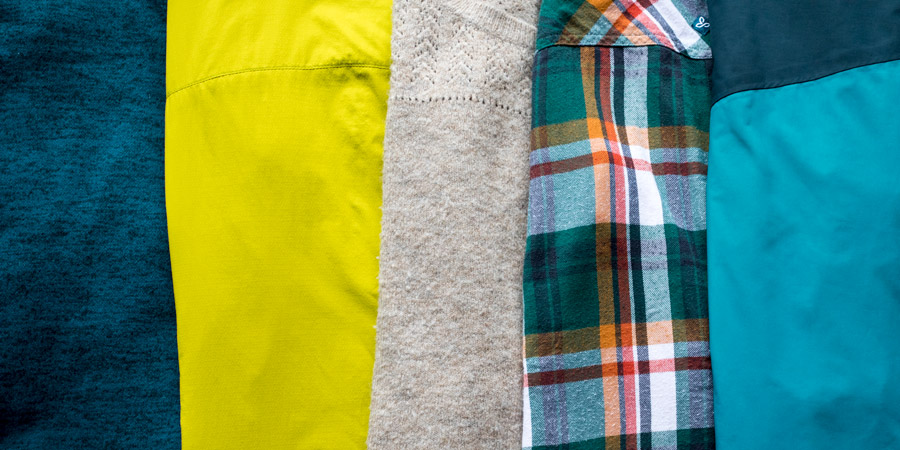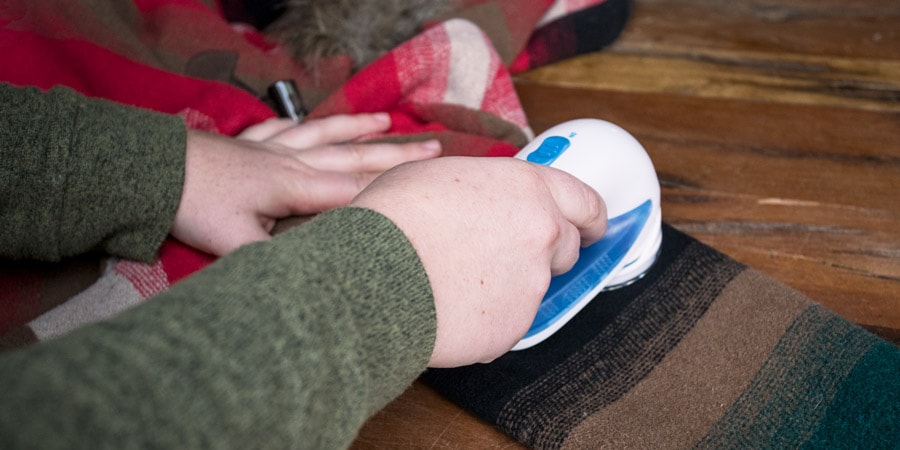Is your favorite fleece jacket or cozy sweater covered in pills? Sometimes, those fuzz balls are a just a minor nuisance, but if they get bad enough they can really upend your appearance. To help you get a handle on pilling, this article covers:
- What causes pilling: Abrasion is almost always the culprit.
- How to prevent pilling: Reducing abrasion, buying quality products and following care instructions are a few ways.
- How to fix pilling: You can physically remove pills and wash your garment with similar colors to keep pills hidden.
What Causes Pilling?
Abrasion is almost always the cause of pilling. The abrasion can be from fabric rubbing on itself, such as in the armpit of a jacket, or fabric rubbing on something else, like a backpack waistbelt or hook-and-loop fastener (aka VELCRO® closure). The abrasion eventually causes fibers of fabric to loosen up and tangle with each other, which results in little pill balls on your clothing.
How to Prevent Pilling

Here are a handful of things you can do to help prevent pilling:
- Reduce abrasion: Because pilling is chiefly caused by abrasion, reducing rubbing is the most obvious way to help prevent it. If the appearance of a particular article of clothing is really important to you, make sure nothing is rubbing against it. Things like a hook-and-loop closure rubbing against your shirt or the constant friction of a messenger bag against your back can encourage pills to form.
- Buy pill-resistant fabrics: Some fabrics, such as tightly woven nylon, will resist pilling better than soft, fuzzy ones like fleece, wool and flannel. When shopping, keep an eye out for fabrics labeled as pill-resistant.
- Consider quality: In many cases, higher-quality items will pill less than lower-quality ones. Also, when you buy products from respected brands and retailers, you're more likely get an item that was designed and tested to guarantee good performance. At REI, our team of analysts tests all fabrics used in REI Co-op-brand items to ensure they meet certain pilling standards.
- Follow care instructions: Clothing manufacturers develop washing and drying instructions with fabric performance in mind, so it's recommended that you follow them. This is particularly important for items you suspect will pill, like a soft sweater or pair of long underwear.
If you've tried these tips and are still getting pilling, consider this: Clothing makers can only do so much to design items that won't pill. This is especially true for garments like long underwear and socks that need to feel great next to skin, but also see a lot of abrasion. If you desire soft, ultra-comfortable clothing items, you may have to accept that some pilling will happen.
How to Fix Pilling

Some fabrics are inherently prone to pilling and no matter what you do, eventually those little fuzz balls will appear. Unfortunately, there's no magic way to fix pilling once it's begun, but there are a couple things you can do to improve the appearance of your clothing:
- Remove pills: you can physically remove pills by picking or brushing them off with your hand or cutting them with a pill shaver.
- Separate light and dark clothing: This won't actually fix pilling, but it will help hide it. If you mix your lights and darks in the washer and dryer, the fibers on your light-colored items may tangle with the fibers on your favorite dark-colored jacket, drawing attention to pills.

